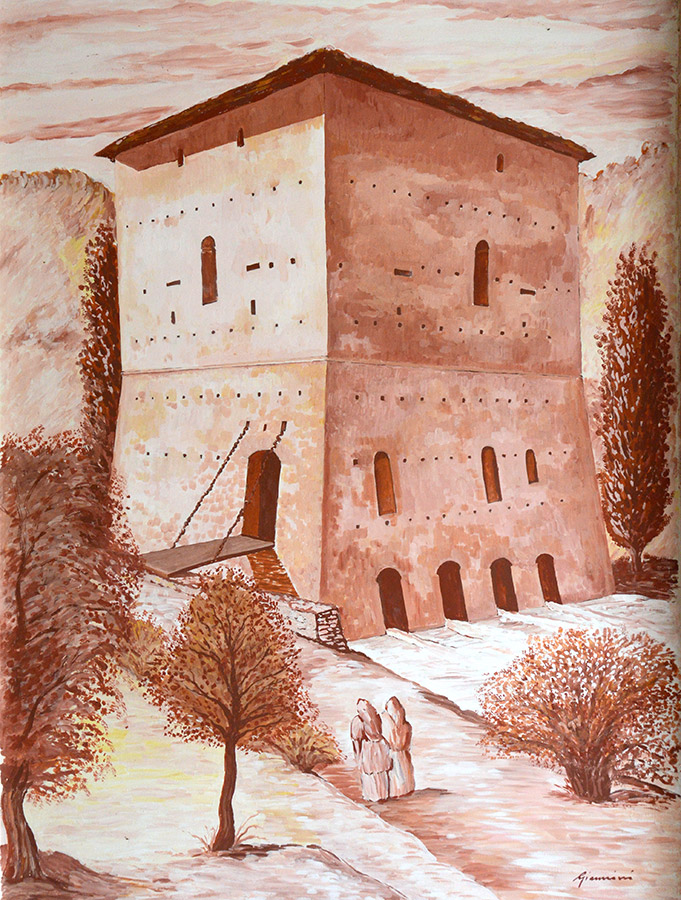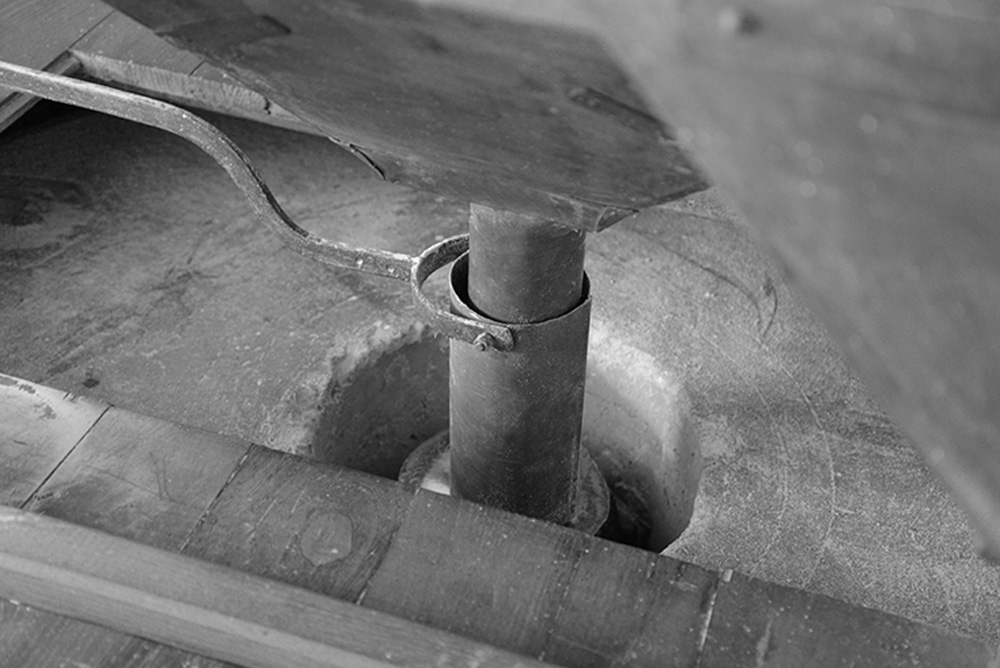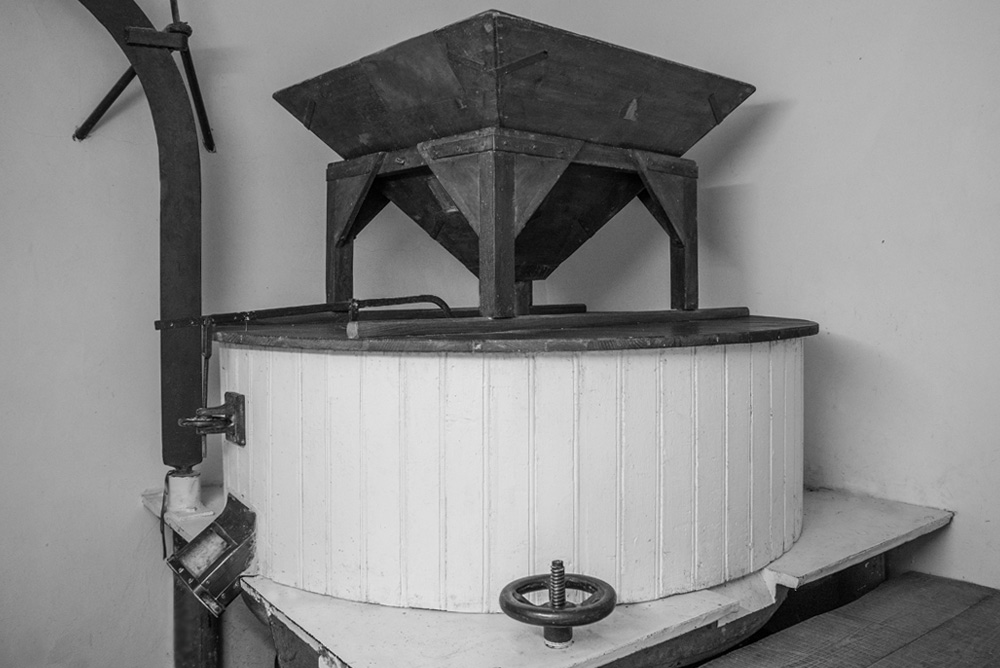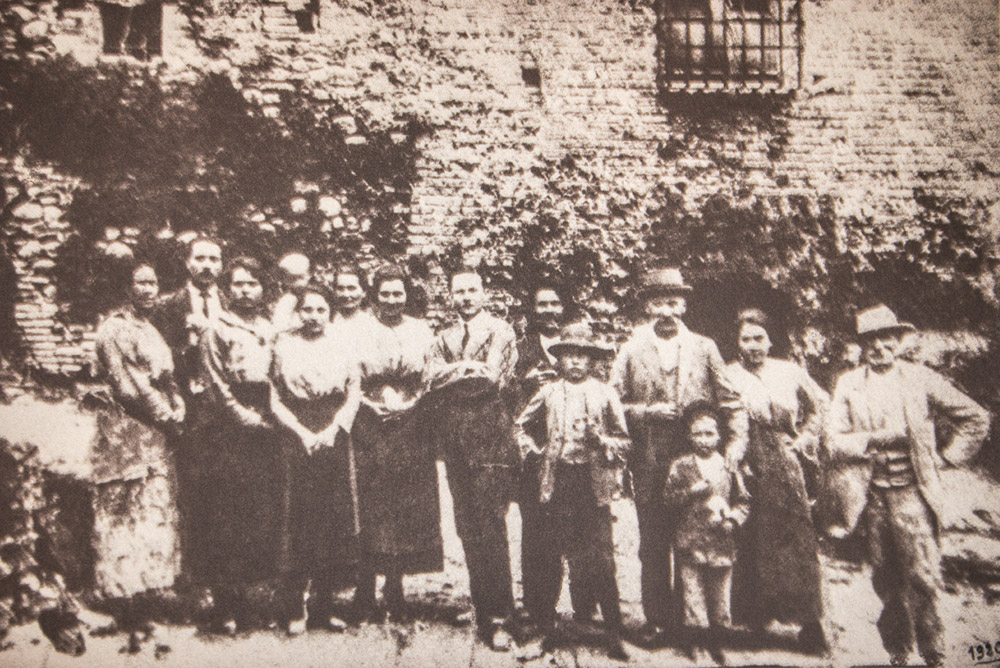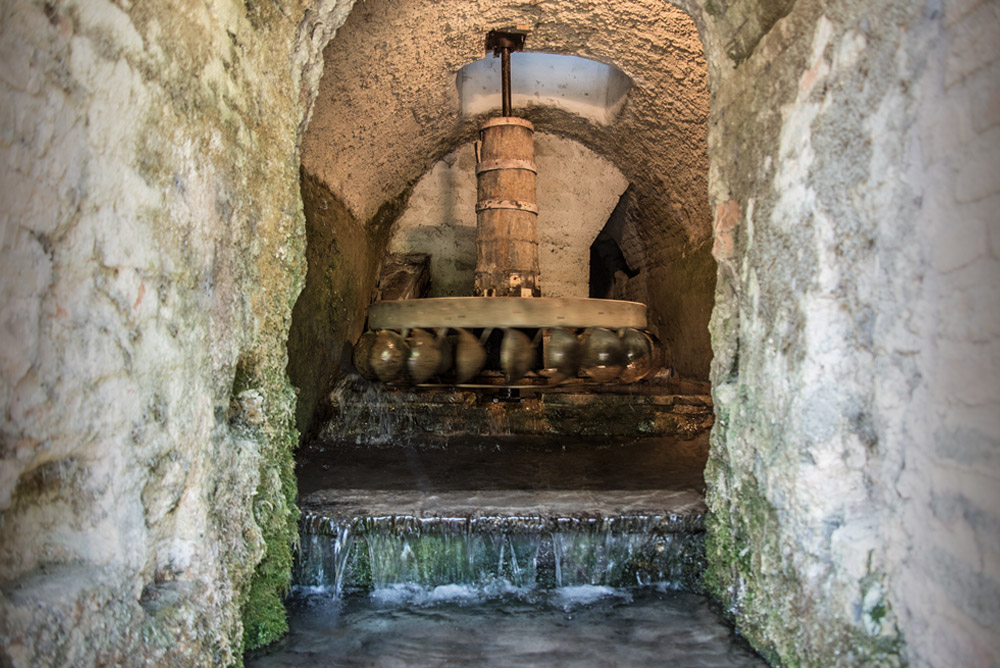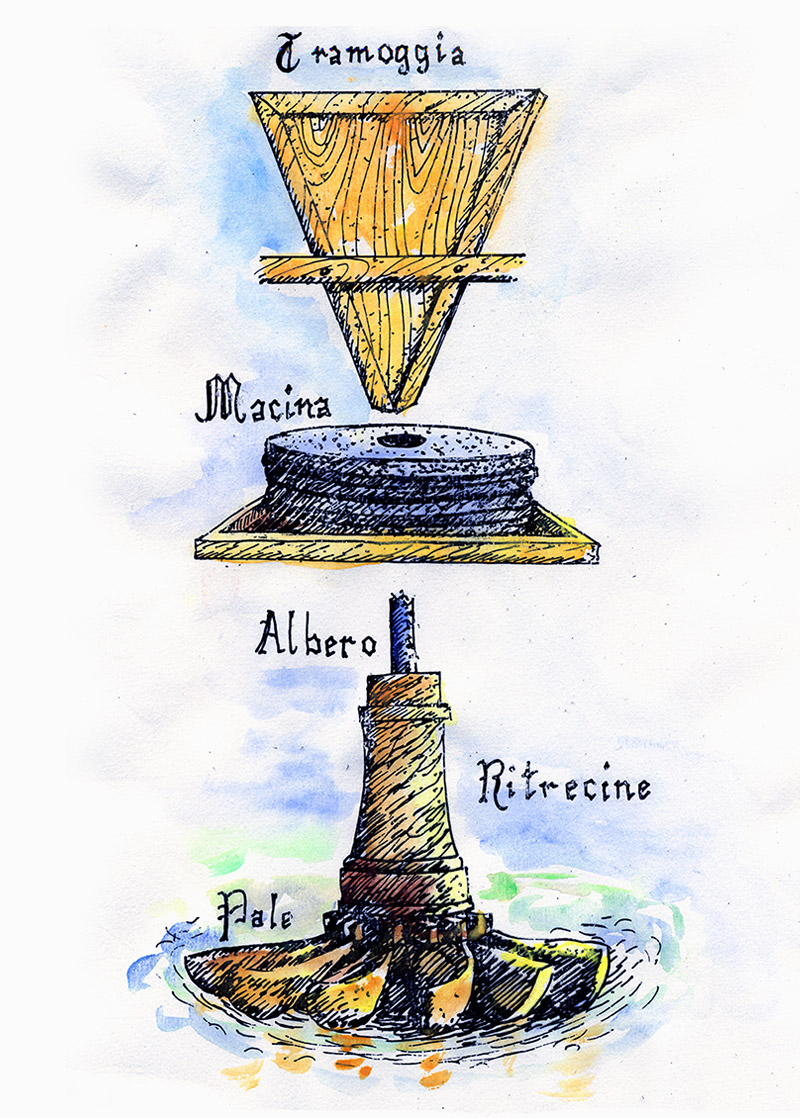THE MEDIEVAL FORTRESS
The Mill
As protection for Montefortino’s territory, its village and its factory, the “inclitae terreae Montis Fortini, seu Fortinopolis”, Monteforino’s community, in the XV sec, have built a stronghold.
The structure was located close to the village, along the right shore of river Tenna, close to the confluences with rivers Cossudro and Ambro.
The fortified mill was at the entrance of the Infernaccio gorge and our Lady of Ambro sanctuary.
The mill was fundamental during middle age, for the community survival and its prosperity.
The mill fortification was due to the sake of flour production fondmental for the community, it was also necessary to protect other manufactories as: fulling mill, dyeing plant and mallet, in order to prevent damage to the structure, and troubles to community.
Our Mill was the only one to stand across centuries, with a central role in local economy.
The structure is a good example of XV century fortification, it was built by Lombard architects, master in brick building, whos stile and knowledge are nowdays evident in the structure.
The structure is rectangular shaped, with clay-brick wall, scap wall base, it ends in a stringcourse, the upper part has parallelepiped shape, it end with hip-roof.
In the eastern side you may see four discharge port, from there the water returns to the river from the mill.
The mill was originally surrounded by a moat, as using during middle age.
The access was possible only using a lift bridge, in the entrance you may see the channels of the portcullis, used to prevent the enemy entrance.
The structure is the symbol of the city and its habitants, part of their identity, also one of Montefortino’s greatest beauty .
The inside, after the restoration, maintains the typical elements of the fortified mill: you may see the loophole, strategically located for the defensive, the arches, the vaults with drop shape stone, the portcullis’s channels in the entrance and the original walnut door, that survives trough centuries.
Outside you may see the mill wheel, still moved by the river, you can also see the old millstone, it is still used to produce wheat flour and maize flour, they create the typical mill’s smell.


